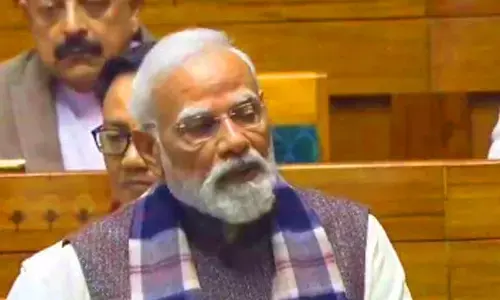Does India possess a visual sense or design sense?

Does India possess a visual sense or design sense?
Salvador Dali has gone on record to say that the greatest surreal image in the world is Ganesha.
Salvador Dali has gone on record to say that the greatest surreal image in the world is Ganesha. For over three decades I have been observing the vibrant Ganesha festival in Pune, in awe. This year, as I was admiring the various decorative themes of different Ganesha mandals along with my college friend, Uma, from J.J. Applied Art, she spontaneously said, "In India, we have a tremendous visual sense. Not a design sense. Design is completely different." That got me thinking. Seeing the confusion on my face, Uma elaborated that in India, our design sensibilities came in much later, when many Indians went abroad and learned design. Thereafter, we have tried to learn and combine it with our Indian sensibility. But it is essentially Western"
The reason, according to her, was that mass communication developed very late in India compared to the West. We were great visualizers, we had tremendous visual sense exemplified by some of the finest art you'll find in the folk traditions in India, like Madhubani or Warli art. Warli is amazing in terms of its simplicity; with a simple stick form, they manage to curve, turn, twist, and do whatever an artist wants to narrate a story. She asserted that Warli preceded any Western art. It is almost 'cave-painting-like' in its essence. Like ancient hieroglyphs or something of that time. But that is in terms of 'pure art', not 'applied art'. Fine art is ingrained in our culture.
I said, "But Uma, to me…everything in India is design. There is so much craft in India. What is it, if not design? Maybe, people around the world did not know, what to call it and came up with a word, 'design'. Look at the variety of our Indian food items, the clothes, Uma. I strongly think…even if all the cuts of the clothes, and garments, in the whole world are put together; they will still be lesser than those in India! See the way a saree is worn. The nine-yard Maharashtrian saree is worn in different ways in Maharashtra. Isn't that design? Look at all the different rangoli designs (thresh-hold designs in India), muggu from Andhra, kolam from Chennai, alpana from Kolkata. Aren't they beautiful designs? In the west, design emerged as a result of mass production. The story in India is different. In Sanskrit, the word kala covers art and craft."
But Uma held on strongly to her point of view and went on and on as she noticed I wasn't convinced and said, "Take a look at the temple sculptures in Mahabalipuram or Konark or even those in caves. It was not the individual who was important in a sculpture. It was a master craftsman who was called a stapathi who would visualize it and under whose guidance, hundreds of artisans worked and executed it. But even the master craftsman never wrote his name. They are all part of the tremendous visual richness of India. Temple murals that you see in Kerala date back many centuries. Nowhere in the world do we find mural paintings like those in Ajanta and Ellora". Uma was trying her best to convince me with various examples almost taking me on a virtual art tour in India.
Trade and commerce happened in the west much before it found roots in our country. Even abroad when we observe all the old posters, they were done by painters who started doing illustrations and typography they were all rolled into one.
Therefore, in India, we had no mass communication to speak about to create design. It was an oral tradition; mass production of writing didn't exist. It needed a Guttenberg to introduce printing technology to us. We got the printing machine much before we got the sense of design.
I was enjoying these insights as we found our way through hundreds of devotees. Thirty-five years ago, we were in the same class and enjoyed our space as back-benchers. Both of us are graphic designers from the late 20th century. We fondly remembered our professors telling us every day "study the anatomy of everything around you. Study the anatomy of that curtain which has been piled up there.…look, observe, draw its folds. You need to understand the anatomy of water bouncing, water trickling… the flowing, and falling water". In chaotic lanes, we were remembering these words and our hearts were filled with gratitude towards our professors who instilled high academic rigor which helped us in our professions later.
Consider copywriting, for instance, Uma said, "English, over a period of time, became a mass-communication language; whereas none of our languages became mass-communication languages. They never adapted themselves to talk to people. There was almost a bookish rendering of language; as if it is written to be read, not to be heard". I smiled at her as I was hearing devotional songs, seeing bright colorful lights, and looking for the God of Wisdom in every nook and corner of the city, my thoughts oscillating and pondering on the amazingly brilliant design history and culture our country has. I didn't buy what Uma had to say and left her glued to her understanding. Amidst the festive grandeur in front of us, I didn't wish to enter into an argument; however, this was one of the most engaging, intriguing, Ganesha darshan I had ever experienced.
(The author is a Associate
Professor-Fine & Performing Arts, Flame University)















